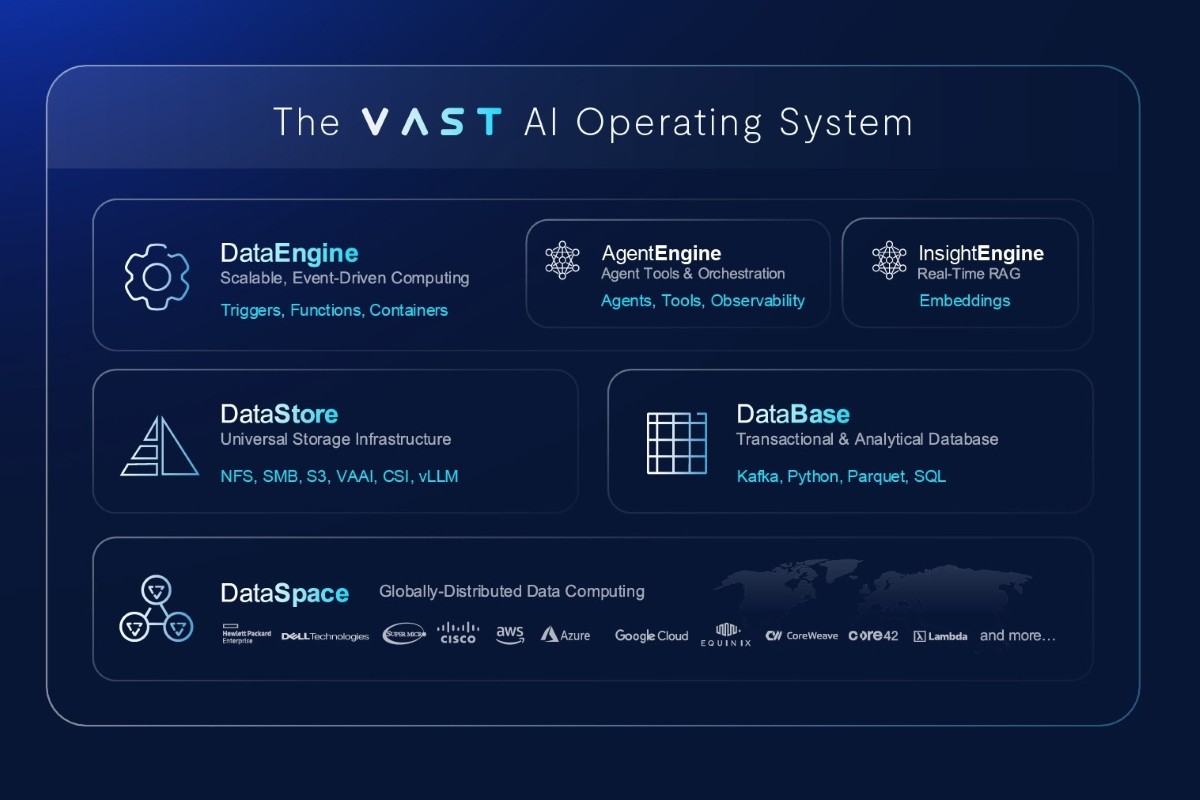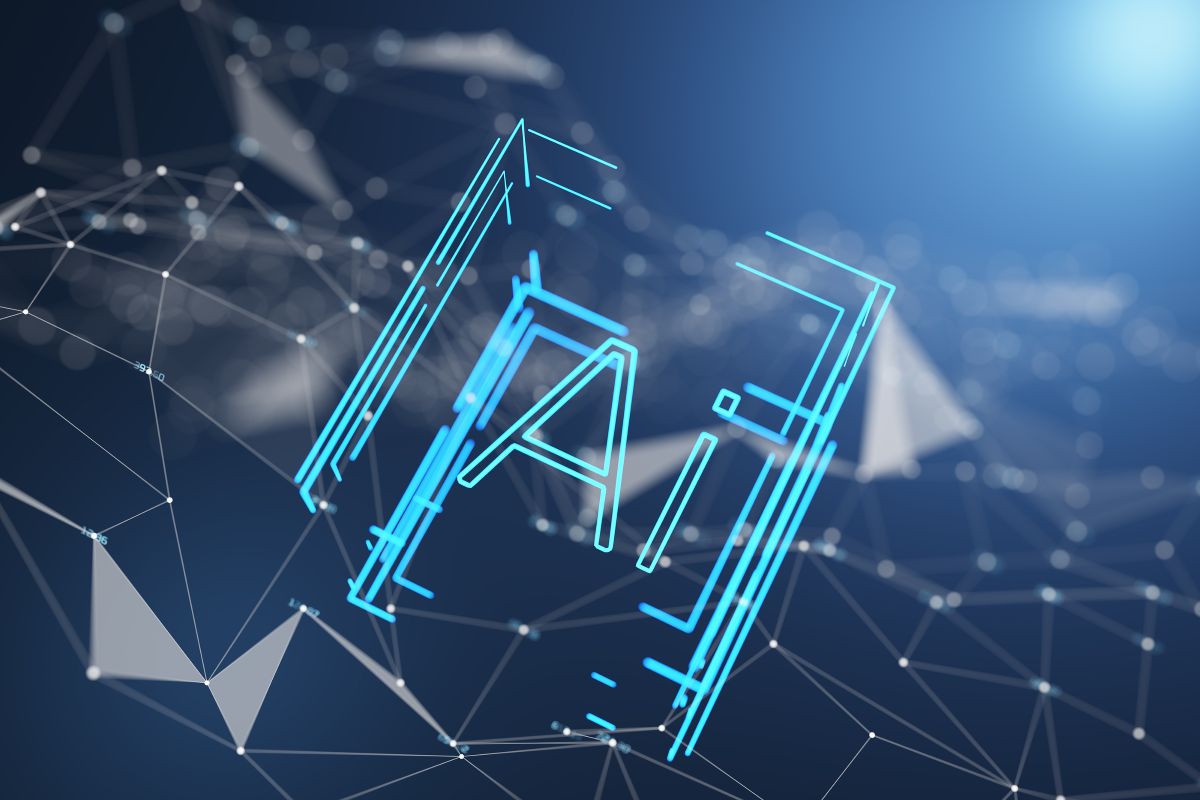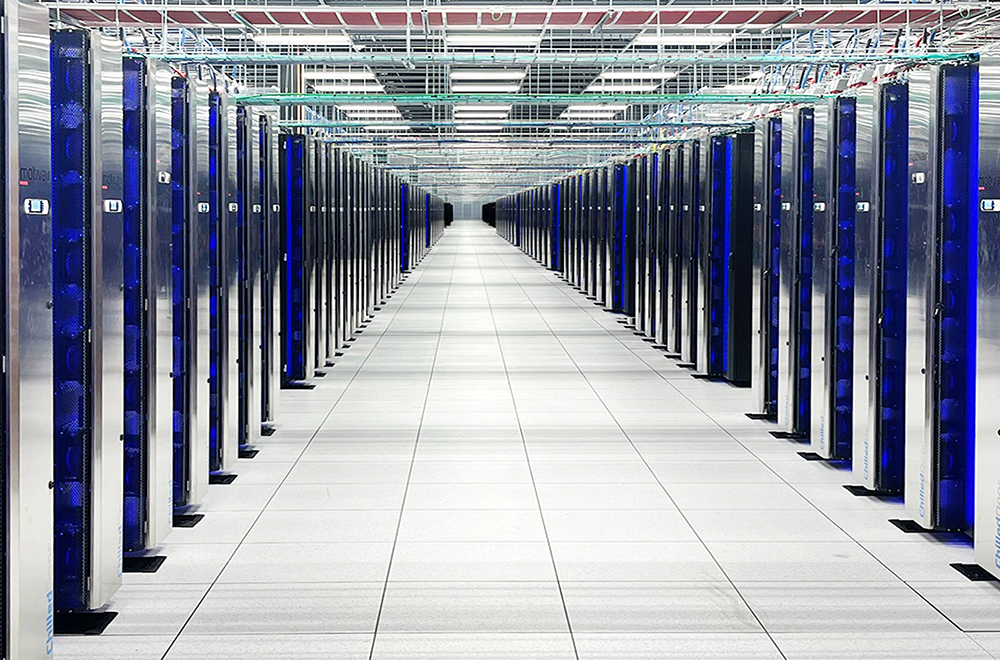Artificial Intelligence in Data Centre Operations
Artificial Intelligence in Data Centre Operations
Data
Data Centre Operations: Optimising Infrastructure for Performance and Reliability
Insights into Data Centre Investment & Market Growth
News
UKRI invests £22 million into data spending
The UK Department for Research and Innovation (UKRI) has invested £22 million into data spending and staff over the past three years, underscoring the department's strategic commitment to data as a cornerstone of national research and innovation.
Data is playing an increasingly vital role, particularly as artificial intelligence (AI) is being rolled out throughout government departments, with 70% of government bodies already piloting or planning to use AI, highlighting the urgent need for high-quality, structured, and secure data.
This development marks a 70% increase in salary investment in just two years, reflecting both rising headcounts and the increasing value of data expertise in shaping the UK’s research landscape.
Stuart Harvey, CEO of Datactics, comments, “Both businesses and government departments are keen to implement AI into their business functions but are overlooking the fundamental truth that AI is only as good as the data it learns from. Hiring challenges are becoming an increasing problem, but businesses should follow in the UKRI's footsteps to invest in data spending and staff, and upskill their teams in data management, governance, and quality to improve data readiness.
“AI is only as effective as the data it processes and without structured, accurate, and well-governed data, businesses risk AI systems that are flawed. The rush to deploy AI without a strong data foundation is a costly mistake and, in a competitive AI landscape, only those who get their data right will be the ones who thrive.”
UKRI’s investment in its data workforce reflects the growing demand for high-quality, well-managed, and accessible data that enables researchers to collaborate, innovate, and respond to global challenges.
Between 2022 and 2025, UKRI’s data-related salary investment rose by 85%, from £5.35 million to £9.89 million, reflecting both growing headcounts and the escalating value of data expertise across the UK’s research ecosystem.
Over the same period, the number of staff with “data” in their job titles rose from 138 in 2022 to 203 in 2025 - a 47% increase.
Sachin Agrawal, Managing Director for Zoho UK, says, “As the UK continues to position itself as a global science and technology powerhouse, it is a welcome sight to see the department prioritising the investment of its data workforce for long-term commitment to data-driven research.
“In an era where public trust and data ethics are paramount, building in-house expertise is essential to ensuring that data privacy, transparency, and compliance are at the heart of our national research infrastructure. This strategic investment lays the foundation for smarter and safer technology use by the UKRI."
Joe Peck - 9 June 2025
Artificial Intelligence in Data Centre Operations
Data
Data Centre Operations: Optimising Infrastructure for Performance and Reliability
News
House of Commons boosts data workforce by 50%
The UK's House of Commons has splashed £7.5 million into data spending and staff over the past three years, underscoring its strategic commitment to data as a cornerstone of national research and innovation.
As the public sector embraces AI at pace, with over 70% of government bodies piloting or planning AI implementation, the demand for robust data infrastructure and skilled personnel has never been greater. In response, the House of Commons has quietly ramped up hiring and spending on data roles, reflecting a broader strategic shift towards data-centric governance.
Over the past three years, the number of staff in the House of Commons with "data" in their job titles has jumped from 49 in 2022 to 73 in early 2025, marking a 49% increase.
Alongside this, total salary investment for data roles rose by more than 63%, from £1.83 million to £2.98 million, excluding final April 2025 figures still pending payroll completion.
The figures reflect a growing recognition within Parliament that AI innovation is only as effective as the data that underpins it.
Stuart Harvey, CEO of Datactics, comments, "There's a growing appetite across government to harness the power of AI, but what's often overlooked is that AI is only as reliable as the data it's built on. The House of Commons' investment in data roles is a critical step toward ensuring its systems are grounded in quality, governance, and accuracy.
"Hiring the right data professionals and embedding strong data practices is no longer optional, it's essential. Without it, organisations risk deploying AI that makes poor decisions based on flawed information. In this new era, those who prioritise data integrity will be the ones who gain real value from AI."
The increase in data staffing at the heart of Parliament reflects a wider cultural shift toward long-term digital resilience, ensuring that public institutions are equipped to harness AI ethically and effectively.
Richard Bovey, Head of Data at AND Digital, says, "The House of Commons is leading the way for data investment, with 66% of businesses agreeing that data investment is a top priority for their organisation, according to our recent Data Loyalty research. This move signals a long-term commitment to data-driven governance at the heart of the public sector.
"As the UK advances its position as a global leader in science and technology, building in-house data capability is vital, not only to unlock innovation, but also to safeguard, embedded from the ground up, enabling institutions to innovate responsibly.
"But data alone isn't enough. Organisational culture plays a crucial role in turning insight into impact and a culture that truly values curiosity, empathy, and accountability is what transforms data points into better decisions and more meaningful outcomes. By investing in its data workforce, the House of Commons is laying a robust foundation for smarter, more ethical, and future-ready public services. It's a necessary step toward creating a public sector that is both digitally progressive and aligned with democratic values."
Joe Peck - 3 June 2025
Artificial Intelligence in Data Centre Operations
Data Centre Operations: Optimising Infrastructure for Performance and Reliability
Data Centres
News
Colovore appoints infrastructure veteran as CEO
Colovore, a leader in ultra-high-density, liquid cooling colocation solutions, today announced the appointment of Jeffrey Springborn as Chief Executive Officer. A seasoned operator in data centre development and cloud services, Jeffrey intends to guide the company through its next phase of growth as it scales a national buildout strategy across the USA to meet rising demand for AI and high-performance computing (HPC) infrastructure.
Jeffrey joins Colovore on the heels of a $925 million financing facility with Blackstone to fuel expansion of its AI data centre platform in key US metro markets. Driven by strong demand for mission-critical infrastructure that supports enterprise planning and multi-market deployments, Colovore is expanding into key US metro markets. New high-density, liquid-cooled facilities are being developed to align with customer roadmaps, enabling partners to secure capacity and shape infrastructure rollouts that match long-term AI and HPC growth.
“AI infrastructure needs are evolving faster than most data centres can adapt,” says Jeffrey Springborn, the new CEO of Colovore. “Colovore is building what tomorrow demands—today. The customers we’re partnering with aren’t just early adopters, they’re forward-thinking leaders who see what’s coming and are preparing for it now. They know that to stay ahead in AI, you can’t wait for capacity. You have to secure the right infrastructure before the rush. With the backing of King Street, that’s exactly what we’re enabling them to do.”
Colovore Board Chairman and Managing Partner of King Street Capital Brian Higgins comments, ‘"I'm pleased to announce Jeff Springborn as Colovore's new CEO. We identified Jeff as the leader with the right experience to accelerate our growth in the AI infrastructure market. His 30 years of technology leadership and infrastructure expertise will be crucial as we expand our liquid-cooled data centres nationwide. Jeff complements the strong foundation built by Sean and Peter, positioning Colovore to meet the surging demand for AI-ready infrastructure. The Board is confident in Jeff's ability to execute our strategic vision in this next phase of growth."
“Smart companies are locking in infrastructure now to avoid being left behind later,” states Jeffrey. “We’re not just building data centres—we’re shaping the AI backbone of tomorrow.”
For more from Colovore, click here.
Joe Peck - 27 May 2025
Artificial Intelligence in Data Centre Operations
Data
Data Centre Operations: Optimising Infrastructure for Performance and Reliability
Data Centres
VAST Data unveils its operating system for the 'thinking machine'
VAST Data, a technology company focused on artificial intelligence and deep learning computing infrastructure, today announced the result of nearly a decade of development with the unveiling of the VAST AI Operating System (OS), a platform purpose-built for the next wave of AI breakthroughs.
As AI redefines the fabric of business and society, the industry again finds itself at the dawn of a new computing paradigm – one where great numbers of intelligent agents will reason, communicate, and act across a global grid of millions of GPUs that are woven across edge deployments, AI factories and cloud data centres. To make this world accessible, programmable, and operational at extreme scale, a new generation of intelligent systems requires a new software foundation.
The VAST AI OS is the product of nearly ten years of engineering with the aim to create an intelligent platform architecture that can harness the new generation of AI supercomputing machinery and unlock the potential of AI at scale. The platform is built on VAST’s Disaggregated Shared-Everything (DASE) architecture, a parallel distributed system architecture – making it possible to parallelise AI and analytics workloads, federate clusters into a unified computing and data cloud, and then feed new AI workloads with high amounts of data from one tier of storage. Today, DASE clusters support over 1 million GPUs around the world in many of the world’s most data-intensive computing centres.
The scope of the AI OS is broad and is intended to consolidate disparate legacy IT technologies into one modern offering.
“This isn’t a product release — it’s a milestone in the evolution of computing,” says Renen Hallak, Founder & CEO of VAST Data. “We’ve spent the past decade reimagining how data and intelligence converge. Today, we’re proud to unveil the AI Operating System for a world that is no longer built around applications — but around agents.”
The AI OS consists of every aspect of a distributed system to run AI at a global scale: a kernel to run platform services on from private to public cloud, a runtime to deploy AI agents with, eventing infrastructure for real-time event processing, messaging infrastructure, and a distributed file and database storage system that can be used for real-time data capture and analytics.
In 2024, VAST previewed the VAST InsightEngine – a service that extracts context from unstructured data using AI embedding tools. If the VAST InsightEngine prepares data for AI using AI, VAST AgentEngine is how AI now comes to life with data – an auto-scaling AI agent deployment runtime that aims to equip users with a low-code environment to build workflows, select reasoning models, define agent tools, and operationalise reasoning.
The AgentEngine features a new AI agent tool server that provides support for agents to invoke data, metadata, functions, web search, or other agents using them as MCP-compatible tools. AgentEngine allows agents to assume multiple personas with different purpose and security credentials, and provides secure, real-time access to different tools. The platform’s scheduler and fault-tolerant queuing mechanisms are also intended to ensure agent resilience against machine or service failure.
Just as operating systems ship with pre-built utilities, the VAST AgentEngine will feature a set of open-source agents that VAST will release (one per month). Some personal assistants will be tailored to industry use cases, whereas others will be designed for general purpose use. Examples include:
● A reasoning chatbot, powered by all of an organisation’s VAST data
● A data engineering agent to curate data automatically
● A prompt engineer to help optimise AI workflow inputs
● An agent agent, to automate the deployment, evaluation, and improvement of agents
● A compliance agent, to enforce data and activity level regulatory compliance
● An editor agent, to create rich media content
● A life sciences researcher, to assist with bioinformatic discovery
In the spirit of enabling organisations to build on the VAST AI OS, VAST Data will be hosting VAST Forward, a series of global workshops, both in-person and online, throughout the year. These workshops will include training on components of the OS and sessions on how to develop on the platform.
For more from VAST, click here.
Joe Peck - 23 May 2025
Artificial Intelligence in Data Centre Operations
Data Centre Operations: Optimising Infrastructure for Performance and Reliability
Data Centre Security: Protecting Infrastructure from Physical and Cyber Threats
News
House of Lords AI summit highlights cyber threats
Technology industry leaders gathered in the House of Lords yesterday for a high-profile debate on the transformative role artificial intelligence (AI) will play in the UK jobs market.
The discussion, chaired by Steven George-Hilley of Centropy PR, brought together experts to address key industry challenges, including the digital skills shortage and AI’s potential to enhance compliance and accelerate digital transformation across key areas of the UK economy.
The debate highlighted the growing role of AI in reshaping traditional job roles and powering a new wave of relentless cyber threats which could damage British businesses.
Key speakers, including Richard Cuda of Kasha, discussed the role AI and digital technology can play in helping entrepreneurs launch their own business.
Leigh Allen, Strategic Advisor, Cellebrite, says, "In a world where police forces are under increasing strain to combat crime and national security threats, AI technology represents a key enabler in unlocking digital evidence and significantly reducing investigation times. Cellebrite delivers secure, ethical access to digital evidence, using AI to accelerate investigations while closing the digital skills gap for modern law enforcement. We don’t just respond to digital threats—we equip agencies to lead with confidence in a complex, tech-driven world."
Dr Janet Bastiman, Chief Data Scientist, Napier AI, comments, "Financial crime is one of the biggest threats facing the UK economy right now, and in AI we have the answer. AI-driven anti-money laundering solutions have the capacity to save UK financial institutions £2.2 billion each year, helping to bolster compliance processes, improve the accuracy of transaction screening, and monitor transaction behaviour to more effectively identify criminal networks."
Linda Loader, Software Development Director, Resonate, suggests, "AI has the potential to significantly enhance operations in the rail industry by enabling faster and more efficient services. But this must be underpinned by quality data to drive innovative solutions that prioritise security and robust protection for our critical national infrastructure. By exploring smaller AI use cases now, we can build a solid foundation and understanding for more extensive, secure transport applications in future."
Chris Davison, CEO, NavLive, mentions, "By using cutting edge AI and robotics technology to create automated 2D and 3D models of buildings in real time, we can make retrofits, brownfield developments more efficient and contribute to sustainable building practices. NavLive saves architects, engineers and construction professionals time and money, by providing accurate real time spatial data across the lifecycle of a building."
Richard Bovey, Chief for Data, AND Digital, states, "The AI winners are the businesses that have invested the most in AI experimentation, underpinned by years of strong data foundations, meanwhile, SMEs are quickly watching a widening AI gap. But all isn’t lost, investing in data and modern tooling can stop the slide, helping businesses to keep pace and preventing a significant competitive disadvantage from taking over."
Arkadiy Ukolov, Co-Founder and CEO, Ulla Technology, says, "As AI adoption continues to skyrocket, we must ensure that privacy and data security remain a critical component of development. Most of the popular AI tools send data to third-party AI providers, which may use client data to train models. This is unacceptable for sensitive meeting discussions and confidential documents, as it opens them up to data leaks. Placing safety and ethics at the centre of the discussion is the only route that we can take forward as AI evolves."
For more on cyber security, click here.
Joe Peck - 21 May 2025
Artificial Intelligence in Data Centre Operations
Cyber Security Insights for Resilient Digital Defence
Data Centre Operations: Optimising Infrastructure for Performance and Reliability
Data Centre Security: Protecting Infrastructure from Physical and Cyber Threats
News
Scalable Network Attached Solutions for Modern Infrastructure
AI set to supercharge cyber threats by 2027
The UK’s National Cyber Security Centre (NCSC) has released a landmark cyber threat assessment, warning that rapid advances in artificial intelligence (AI) will make cyber attacks more frequent, effective and harder to detect by 2027. The digital divide between organisations with the resources to defend against digital threats, and those without, will inevitably increase.
Published on the opening day of CYBERUK, the UK’s flagship cyber security conference, the report outlines how both state and non-state actors are already exploiting AI to increase the speed, scale and sophistication of cyber operations. Generative AI is enabling more convincing phishing attacks and faster malware development. This significantly lowers the barrier to entry for cyber crime and cyber intelligence.
Of particular concern is the rising risk to the UK’s democratic processes, Critical National Infrastructure (CNI) and commercial sectors. Advanced language models and data analysis capabilities are used to craft highly persuasive content, resulting in more frequent attacks that are difficult to detect.
Andy Ward, SVP International at Absolute Security, says, “While AI offers significant opportunities to bolster defences, our research shows 54% of CISOs feel unprepared to respond to AI-enabled threats. That gap in readiness is exactly what attackers will take advantage of."
"To counter this, businesses must go beyond adopting new tools - they need a robust cyber resilience strategy built on real-time visibility, proactive threat detection, and the ability to isolate compromised devices at speed.”
This latest warning forms part of the UK Government’s wider cyber strategy after announcing the new AI Cyber Security Code of Practice earlier this year. This will form the basis of a new global standard to secure AI and ensure national security keeps pace with technological evolution, safeguarding the country against emerging digital threats.
For more from NCSC click here.
DCNN staff - 8 May 2025
Artificial Intelligence in Data Centre Operations
Data
Data Centre Operations: Optimising Infrastructure for Performance and Reliability
News
Fluidstack selects VAST Data to power AI workloads
VAST Data, an AI data platform company, today announced that Fluidstack, the AI cloud platform, has selected the VAST Data Platform to join other partners in helping to power large-scale, high-performance AI workloads for Fluidstack’s global customer base. With VAST, Fluidstack can deliver enterprise-grade stability, security, and innovation for some of the most demanding AI training environments in the world.
Fluidstack has built its business by managing end-customer workloads on third-party compute capacity – from VAST-powered AI cloud service provider customers to building dedicated GPU clusters on behalf of clients. Pushing the boundaries of what managed services can offer, Fluidstack uses a flexible problem-solving approach to help end customers manage and scale their workloads with unmatched reliability and agility.
Our mission at Fluidstack is to take the complexity out of deploying and scaling AI infrastructure for our customers,” says César Maklary, President & Co-Founder of Fluidstack. “VAST’s platform gives us the advanced enterprise capabilities we need to deliver reliable, scalable, secure, and future-proof AI infrastructure for our customers as they build cutting-edge models to further AI adoption.
The VAST Data Platform provides Fluidstack’s end customers with:
• Reliable, secure data management: VAST’s enterprise-grade stability, multi-tenant security, and reliability were critical in supporting the demanding AI workloads that Fluidstack manages for customers, while the VAST DataStore’s multi-protocol support (S3, NFS, SMB) offered seamless interoperability for diverse application needs.• Future-proof AI infrastructure: To further support Fluidstack in building, operating, and managing AI infrastructure and workloads for customers, the VAST DataEngine provides integrated vector search capabilities, automated triggers, and intelligent data processing functions designed for large-scale model training and inference. Combined with the real-time data awareness and scalable semantic indexing of the VAST InsightEngine, Fluidstack is well-positioned to deliver increasingly intelligent, responsive, and globally efficient AI infrastructure services.• Fast access to distributed data at limitless scale: The VAST Data Platform’s unique Disaggregated Shared-Everything (DASE) architecture ensures these deployments can reach exabyte scale while remaining cost-efficient—helping Fluidstack empower organisations to use distributed datasets and enable globally-synchronised model training.• Bringing structure to unstructured data: The VAST DataBase serves as a transactional data lakehouse that supports trillions of vectors, allowing Fluidstack customers to index the entirety of their distributed data corpus for AI deployments - providing real-time data access for efficient querying, analysis, and retrieval of massive datasets.
Fluidstack’s innovative approach to AI infrastructure delivery requires a data platform that can operate globally, securely, and with the performance to match cutting-edge AI workloads,” says Renen Hallak, Founder & CEO of VAST Data. “Together with Fluidstack, we’re helping customers turn visionary projects into reality. The combination of Fluidstack’s dynamic managed services with VAST’s global data fabric and advanced enterprise features is unlocking new possibilities for AI model training and development at scale.
For more from VAST Data, click here.
Simon Rowley - 17 April 2025
Artificial Intelligence in Data Centre Operations
Data
Data Centre Operations: Optimising Infrastructure for Performance and Reliability
Enterprise Network Infrastructure: Design, Performance & Security
News in Cloud Computing & Data Storage
Juniper and Google Cloud enhance branch deployments
Juniper Networks has announced its collaboration with Google Cloud to accelerate new enterprise campus and branch deployments and optimise user experiences. With just a few clicks in the Google Cloud Marketplace, customers can subscribe to Google’s Cloud WAN solution alongside Juniper Mist wired, wireless, NAC, firewalls and secure SD-WAN solutions.
Unveiled at Google Cloud Next 25, the solution is designed to simply, securely and reliably connect users to critical applications and AI workloads whether on the internet, across clouds or within data centres.
“At Google Cloud, we’re committed to providing our customers with the most advanced and innovative networking solutions. Our expanded collaboration with Juniper Networks and the integration of its AI-native networking capabilities with Google’s Cloud WAN represent a significant step forward,” says Muninder Singh Sambi, VP/GM, Networking, Google Cloud. “By combining the power of Google Cloud’s global infrastructure with Juniper’s expertise in AI for networking, we’re empowering enterprises to build more agile, secure and automated networks that can meet the demands of today’s dynamic business environment.”
AIOps key to GenAI application growth
As the cloud expands and GenAI applications grow, reliable connectivity, enhanced application performance and low latency are paramount. Businesses are turning to cloud-based network services to meet these demands. However, many face challenges with operational complexity, high costs, security gaps and inconsistent application performance. Assuring the best user experience through AI-native operations (AIOps) is essential to overcoming these challenges and maximising efficiency.
Powered by Juniper’s Mist AI-Native Networking platform, Google’s Cloud WAN, a new solution from Google Cloud, delivers a fully managed, reliable and secure enterprise backbone for branch transformation. Mist is purpose-built to leverage AIOps for optimised campus and branch experiences, assuring that connections are reliable, measurable and secure for every device, user, application and asset.
“Mist has become synonymous with AI and cloud-native operations that optimise user experiences while minimising operator costs,” says Sujai Hajela, EVP, Campus and Branch, Juniper Networks. “Juniper’s AI-Native Networking Platform is a perfect complement to Google’s Cloud WAN solution, enabling enterprises to overcome campus and branch management complexity and optimise application performance through low latency connectivity, self-driving automation and proactive insights.”
Google’s Cloud WAN delivers high-performance connections for campus and branch
The campus and branch services on Google’s Cloud WAN driven by Mist provide a single, secure and high-performance connection point for all branch traffic. A variety of wired, wireless, NAC and WAN services can be hosted on Google Cloud Platform, enabling businesses to eliminate on-premises hardware, dramatically simplifying branch operations and reducing operational costs. By natively integrating Juniper and other strategic partners with Google Cloud, Google’s Cloud WAN solution enhances agility, enabling rapid deployment of new branches and services, while improving security through consistent policies and cloud-delivered threat protection.
Carly Weller - 11 April 2025
Artificial Intelligence in Data Centre Operations
Cooling
Data
Data Centre Operations: Optimising Infrastructure for Performance and Reliability
Data Centres
Liquid Cooling Technologies Driving Data Centre Efficiency
Compu Dynamics launches AI and HPC Services unit
Compu Dynamics has announced the launch of its full lifecycle AI and High-Performance Computing (HPC) Services unit, showcasing the company’s end to end capabilities.
The expanded portfolio encompasses the entire spectrum of data centre needs, from initial design and procurement to construction, operation and ongoing maintenance, with a particular emphasis on cutting-edge liquid cooling technologies for AI and HPC environments.
Compu Dynamics’ new AI and HPC service offerings build on the company’s expertise in white space deployment, including advanced liquid cooling and post-installation services. As a vendor-neutral solutions provider, the company is uniquely positioned to support equipment from virtually every manufacturer with no geographical limitations, ensuring clients receive unbiased recommendations and optimal solutions tailored to their specific requirements.
"Our advanced AI and HPC service offerings represent a significant evolution in data centre services," says Steve Altizer, President and CEO of Compu Dynamics. “We have created this team to respond to the accelerating demand for highly-qualified technical support for high-density AI data centre infrastructure. By working with a variety of OEM partners and offering true end-to-end solutions, we are empowering our clients to focus on their core business while we handle the complexities of their modern critical infrastructure."
The company’s holistic solutions portfolio addresses the growing need for specialised support in high-density computing environments. Compu Dynamics’ innovative liquid cooling solutions are said to offer superior efficiency and reduced energy consumption, making them essential for future-ready data centres. Key highlights of these service offerings include:
· Equipment evaluation, design consultation and procurement.
· Power distribution and liquid cooling system installation, startup, commissioning and quality assurance/quality control.
· Flexible maintenance service options designed for seamless, worry-free support including comprehensive fluid management, coolant sampling and contamination and corrosion prevention.
· Onsite staffing for day-to-day technical operations.
· Dedicated customer success manager.
· 24x7 emergency response team for technical issues and repair services.
"As AI and HPC workloads drive unprecedented demand on data centre infrastructure, our liquid cooling expertise has become increasingly crucial,” says Scott Hegquist, Director of AI/HPC Services at Compu Dynamics. “We're committed to helping our clients navigate these challenges, providing cutting-edge solutions that optimise performance, efficiency and sustainability."
Carly Weller - 11 April 2025
Artificial Intelligence in Data Centre Operations
Data Centre Operations: Optimising Infrastructure for Performance and Reliability
Data Centres
STT GDC India launches AI-ready campus in Kolkata, India
ST Telemedia Global Data Centres (India) (STT GDC India) is set to revolutionise the data centre landscape in Eastern India with the launch of its state-of-the-art AI-ready campus in New Town, Kolkata, India.
Spanning 5.59 acres, this next-generation campus is engineered to support the growing demands of AI computing with high-density rack configurations, advanced cooling systems, and a scalable, modular design. It aligns with the larger economic goals of the country to promote digitally enabled growth and broaden access to sustainable digital infrastructure.
The new age data centre facility has earned the prestigious TIA-942 Rated-3 Design certification, underscoring its commitment to world-class infrastructure and reliability. The campus provides a significant boost to digital infrastructure creation in the eastern part of the country with scalable capacity of up to 25MW in terms of overall IT load. It incorporates forward-thinking power architecture with an N+2C design for reliability and a radial N+N configuration for main power incomers, ensuring dedicated feeder availability. The campus utilises TYPE-TESTED Compact Substations and LV DGs, setting new standards in power reliability and efficiency.
Bimal Khandelwal, CEO of STT GDC India, says, "This expansion is a gateway to accelerating AI innovation in Eastern India. Our Kolkata campus is specifically designed to support the burgeoning AI ecosystem, from startups developing local language AI models to enterprises deploying large language models. The facility’s high-performance computing capabilities and low-latency connectivity will empower organisations to build and deploy AI solutions that drive digital transformation across sectors”.
The facility is built with a concurrently maintainable infrastructure ensuring zero Single Points of Failure (SPOF). It boasts a modular design with flexibility for liquid cooling technologies, supporting the next generation of high-performance computing workloads. The Kolkata data centre prioritises sustainability with a low-PUE (Power Usage Effectiveness) cooling design, incorporating water conservation techniques through closed-loop cooling, rainwater harvesting and greywater reuse. The facility also employs low-GWP refrigerants to reduce carbon footprint, reinforcing STT GDC India's commitment to environmental responsibility.
Having launched in March 2025, this Kolkata facility expands STT GDC India's nationwide footprint to 30 data centres across 10 cities with a total IT load capacity of 400MW. Its strategic location in New Town’s Silicon Valley positions it as a crucial hub for AI development, serving enterprises, hyperscale cloud service providers and government organisations.
This investment aligns with India's growing focus on artificial intelligence and the increasing demand for AI-ready digital infrastructure. The facility will support diverse AI-driven initiatives, from natural language processing in regional languages to computer vision applications in manufacturing and healthcare, ensuring high reliability, energy efficiency and environmental sustainability.
Carly Weller - 7 April 2025

Head office & Accounts:
Suite 14, 6-8 Revenge Road, Lordswood
Kent ME5 8UD
T: +44 (0)1634 673163
F: +44 (0)1634 673173









